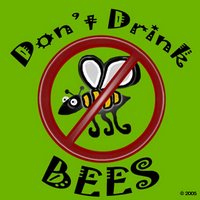BDA: The Afterlife
Here are Before, During, and After activities for The Afterlife by Gary Soto:
Before You Begin Reading…
Complete one of the following activities.
- How would you like to be remembered by people? What would you like to accomplish in your life? Write at least half a page.
- What do you think about suicide? Write a letter to someone who is thinking about committing suicide.
- Write at least half a page describing a person who means a lot to you. What is special about this person? What are his or her best qualities?
- Has anyone close to you died? What happened? How do you feel now? Complete at least half a page.
While You Are Reading…
Complete one of the following activities.
- Write at least a sentence that each character might say at Chuy’s funeral. You can use the following format.
Character’s Name:
Relationship to Chuy:
What he or she might say at the funeral:- Create a map of Chuy’s travels.
- Elisabeth Kubler-Ross believes that there are 5 stages that a person goes through when someone close to them dies:
Denial – it didn’t happen
Anger or resentment
Bargaining
Depression
Acceptance
Create a chart with character names written on the rows of the first column and with Kubler-Ross' 5 stages as column headings. Check off the stage box or boxes for each character showing what stages they go through after Chuy dies.- Make a list of all the lessons that Chuy learns in the story.
When You Have Finished Reading…
Complete one of the following activities.
- “Death makes a person appreciate life more.” Would the author agree or disagree with this statement? Write a paper, using at least 3 examples from the book, to support your argument.
- Why do you think Chuy faded away slowly instead of disappearing all at once? Write a paper, at least 2 pages in length, explaining your thoughts.
- What do you think of the author’s representation of death? If you had written the story, how would you have represented death? Explain why. Write at least 2 pages.
- What clues in the book point to Chuy being killed? Write an epilogue chapter solving Chuy’s murder.
- Write at least 5 poems about both Gary Soto’s and your ideas about the afterlife. Write a minimum of 2 sentences explaining each poem.
- Create a poster or picture that represents the afterlife. Write at least a page explaining your poster or picture.
- What do you think about what Crystal did? Do you think she regrets her decision? Write a paper about how you feel about Crystal’s suicide and her afterlife.
- Research the topic of suicide. Then do one of the following with the information you learn:
- Make a pamphlet or handout
- Make a poster
- Give an oral report
Labels: activities, after, afterlife, bda, before, death, during, gary soto, reading

